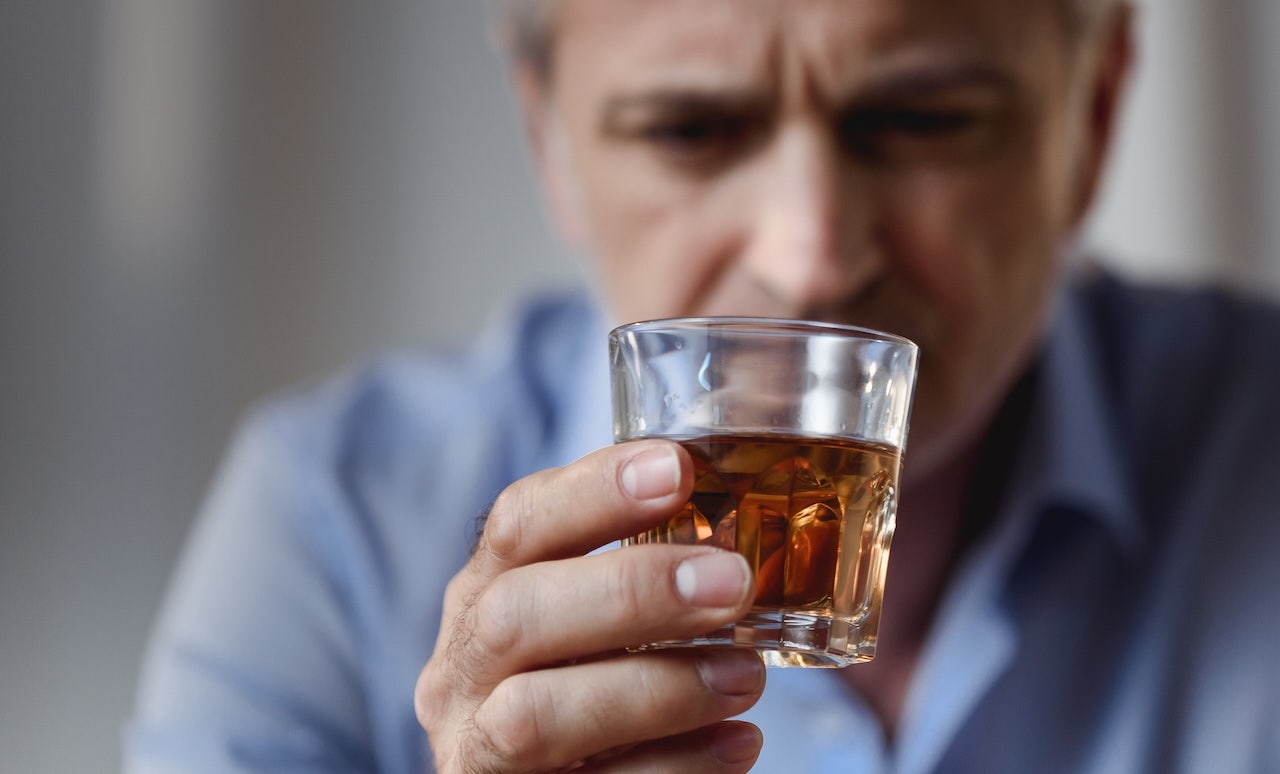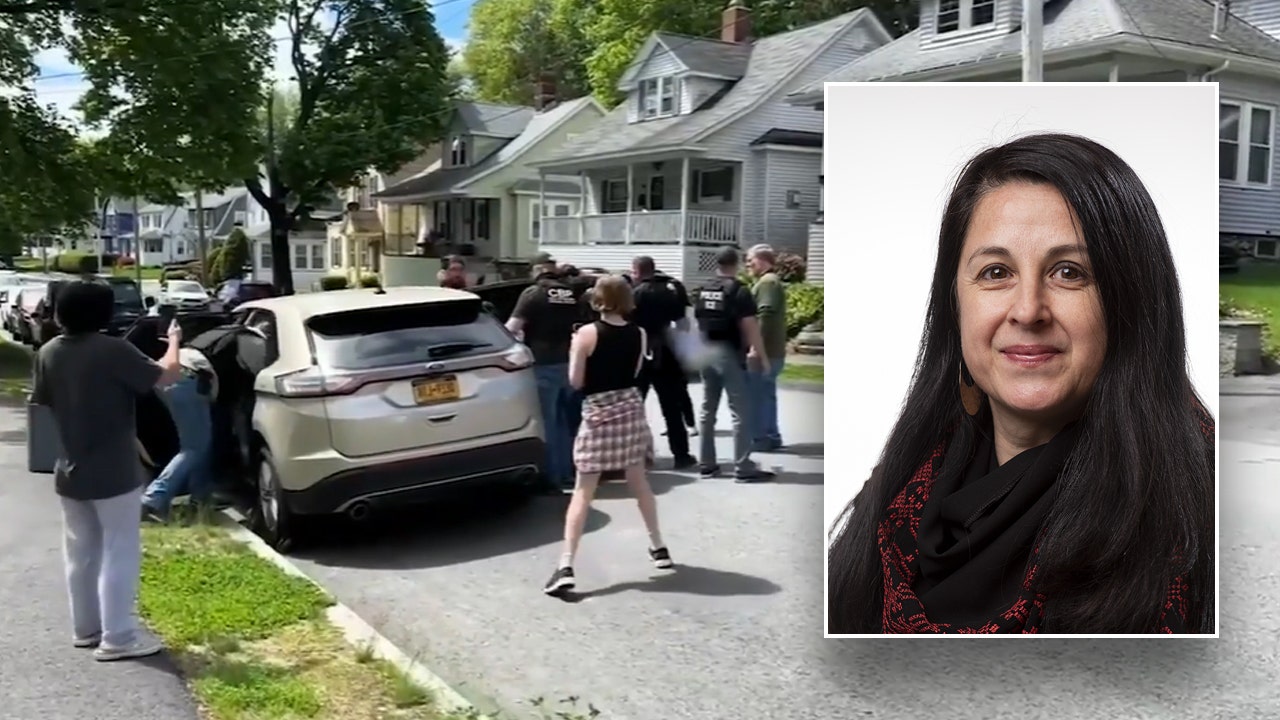Health
Dr. Eric Berg: This Keto Twist Makes the Diet *Even Better* for Weight Loss

It’s no secret: The keto diet has helped millions of people lose millions of pounds, and its devotees often rave about their success. But all that fanfare can make it extra disappointing for those who aren’t getting great results on the plan. Years ago, natural health expert Eric Berg, DC, had a few patients came to him with just that frustration. “Those three people kept me awake at night,” he recalls. “They drove me to look at new research, new theories and try many things that failed. But, eventually, I found a strategy that helped them — one I still use today.” So what is the Dr. Berg keto diet twist? It’s all about timing your meals to help kick start fat burn. Dr. Berg says it’s the fastest way to lose weight without exercise. And he’s got more than 11 million YouTube followers and an army of success stories backing him up. Read on to learn how it works, then keep scrolling for the turbo keto diet plan that can help you.
What is the keto diet?
The keto diet, short for “ketogenic diet,” is a food formula that involves consuming very low amounts of carbohydrates, moderate amounts of protein and high amounts of fats. This ratio of nutrients shifts the body’s source of energy from carbs (or glucose) to fats (or ketones). When we eat a diet with plenty of carbs, our bodies use up the carbohydrates we eat, converting them into glucose for energy. However, when you follow the keto diet and dramatically decrease your intake of carbs, your body doesn’t have enough glucose for energy. So, it starts breaking down fats for energy instead. This process is called “ketosis.” (Click through to learn more about keto basics and learn about “dirty” keto.)
Dr. Berg’s keto diet discovery
The Dr. Berg keto diet difference: In addition to keeping carbs to about 5 percent of your total calories, the best-selling author of The Healthy Keto Plan has you limit how often you eat to boost levels of human growth hormone (HGH) — your body’s number-one weight loss hormone — “by 1,300 percent,” he says, citing research from Intermountain Medical Center in Utah. “Maximizing your HGH is like flipping a switch that helps your body burn fat 24/7.”
How well does it work? “It can help an average woman lose five to 10 pounds within nine days,” Dr. Berg promises. He’s even seen losses of up to 22 pounds in nine days. (Prefer a slower approach? Click through for Dr. Berg’s baby steps approach to keto and see how one woman lost 176 lbs.)
How human growth hormone helps speed weight loss
“One of the main functions of human growth hormone is helping the body tap into fat reserves during times when there is no food. And science shows that simply eating less often causes HGH to surge,” Dr. Berg explains. While any intermittent fasting technique that lengthens the time between meals will boost HGH, Dr. Berg uses a staggered cycle, which has a distinct advantage. “An irregular eating pattern keeps your system off kilter, revving metabolism and preventing plateaus.”
Bonus: HGH — which tends to decline as we age — helps build firm muscle. So while some dieters look saggy after they slim down, that doesn’t happen on Dr. Berg’s diet. (Click through for more anti-aging keto benefits and learn how one women lost 75 lbs at age 66 with no sagging skin.)
Dr. Berg’s 9-day keto diet basics
To boost human growth hormone, Dr. Berg has you start by varying the number of meals you eat and eliminating snacks. For the first three days, enjoy unlimited low-carb breakfast, lunch and dinner. For the next three days, enjoy unlimited low-carb brunch and dinner. For the final three days, dig in to an unlimited low-carb brunch and have a green smoothie for dinner. You can repeat this nine-day cycle as often as you like. “The meals are delicious, and you eat as much as you need to feel content,” Dr. Berg says. “This is about meal timing and keeping carbs down. As far as portions go, there’s no need to hold back!”
Dr. Berg’s keto diet: success stories
“I had never gone low-carb before because I couldn’t even consider giving up bread, pasta and pizza. But at 230 pounds, I felt so lousy, I was ready to try anything,” recalls Jennifer Rogers, 44, a Florida caregiver. Eventually, she stumbled on Dr. Berg’s YouTube channel. “I steadily went from always hungry to never hungry. Now my body only wants to eat once or twice a day.” Her health has improved dramatically, with conditions from migraines and psoriasis to prediabetes disappearing. All told, she shed 80 pounds — and her husband dropped 90. Jennifer’s best tip? Track your progress. “Take measurements; try on outfits and take photos to show how far you’ve come. It will keep you inspired!”
For Michelle Spiva, 49 — whose sugar cravings led her to regain 45 pounds shed on Weight Watchers — Dr. Berg’s keto diet has been life-changing. “I lost 81 pounds and 14 inches off my waist,” marvels the Georgia romance novelist. “Somehow it even helped my emotional cravings for food!”
Then there’s North Carolina mom Vicki Bales-Humble. She hit a plateau using keto alone and turned to Dr. Berg for help. “Going back and forth between three meals, two meals, one meal — I was amazed at how wonderful I felt. I was not at all hungry, no cravings, loads of energy, even my joint swelling went away in a week,” she recalls. “I feel better at 49 than I did in my 20s!” Vicki lost 92 pounds. (For more inspiration, click through to read how one woman paired keto and intermittent fasting to lose 255 lbs at age 63.)
Dr. Berg’s keto meal plan to get you started
Our nutrition team followed Dr. Berg’s keto diet guidelines to create this version of his plan for you to try. Portions listed help ensure you’re getting the right proportions of carbs, fat and protein for optimal weight loss. If you need more food to feel satisfied, simply increase portions of foods that are high in fat with moderate protein (such as eggs, cheese, fatty fish and meat). While using this plan, be sure to drink plenty of water. Add other ultra-low-carb beverages and extras (coffee, tea, spices, vinegar, zero-carb sweetener) as desired. For more meal ideas and tips, check out DrBerg.com. As always, get a doctor’s okay to try any new plan.
Your meal schedule
You can repeat the nine-day cycle below as often as you’d like to help boost your weight loss. There’s no snacking on any day, so be sure to eat enough at each sitting to hold you over.
Days 1-3: Eat three meals a day, about four hours between sittings — such as 10 a.m., 2 p.m., and 6 p.m.
Days 4-6: Eat brunch around 1 p.m. and have an early dinner around 6 p.m.
Days 7-9: Eat brunch around 2 p.m. and have a green smoothie (recipe below) for dinner no later than 6 p.m.
Dr. Berg’s keto diet recipes
Use the keto meal plan schedule above to determine how many picks to make each day. We’ve got 7 options below, plus Dr. Berg’s green smoothie recipe and a bonus crave-worthy Parmesan fries everyone will love. Want to make your own meals? The easiest way is to use a free app that calculates percentages of calories from carbs, protein and fat for you. On the Dr. Berg keto diet, you want to aim for about 5% of calories from carbs, 20% from protein and 75% from fat. We like the options at Cronometer.com and CarbManager.com.
Creamy Coconut Shake
This rich sip is packed with healthy fats and protein to keep you satisfied.
Ingredients:
- ¾ cup full-fat coconut milk
- ¼ cup whole milk
- 2 Tbs. frozen berries
- ¼ cup zero-carb protein powder
- 2 Tbs. MCT oil or ¼ avocado
- 1 tsp. vanilla extract
- ice cubes
- a few drops of liquid stevia
Directions:
- In blender, combine all ingredients. Adjust stevia amount to taste.
- Blitz until smooth; enjoy immediately.
Cheesy Egg Scramble
Add as many low-carb veggies as you’d like to this quick, filling meal.
Ingredients:
- Butter
- Chopped veggies
- 3 eggs
- 2 Tbs. cheese
- 3 slices bacon, cooked
Directions:
- In skillet, over medium heat, melt butter. Add chopped veggies. Saute until just cooked.
- In bowl, beat eggs. Add to skillet with veggies; use a spatula to keep the eggs moving. When just set, add cheese. Cook until done.
- Serve with bacon slices.
Dr. Berg’s Famous Taco Salad

Homemade guacamole makes it extra-irresistible — this is also a great way to use up leftover cooked meat.
Ingredients:
- ⅓ mashed avocado
- 2 Tbs. chopped tomato
- 2 Tbs. red onion
- 1 tsp. lime juice
- ½ tsp. salt
- 2 cups lettuce
- 4 oz. browned ground beef
- ¼ cup cheese
- ¼ cup sour cream
Directions:
- In bowl, mix avocado, tomato, onion, lime juice and salt until well combined.
- Add lettuce to serving plate; top with ground beef, avocado mixture, cheese and sour cream.
Cheesy Tuna Casserole
Cozy comfort food has never been so slimming, thanks to this casserole-for-one.
Ingredients:
- 1 cup shredded cabbage
- 1 cup chopped cauliflower
- 2 Tbs. olive oil
- 4 oz. drained tuna
- 3 Tbs. cream
- 2 oz. shredded mozzarella
- 3 Tbs. Parmesan cheese
Directions:
- Sauté cabbage and cauliflower in olive oil for 5-7 minutes; stir in tuna and cream.
- Pour into small baking dish and top with mozzarella. Bake at 350°F for 15-20 minutes.
- Top with Parmesan cheese.
Salmon Salad
Salmon is packing with heart-healthy omega-3 fatty acids. Buy a filet with the skin on? Before you toss it, click through to learn how to turn it into keto-friendly salmon skin “bacon.”
Ingredients:
- 4 oz. salmon or steak
- 2 cups baby spinach
- ¼ cup sliced peppers
- ¼ cup red onion
- 3 oz. feta cheese
- 8 large olives
- 2 Tbs. zero-carb dressing
Directions:
- Sear salmon or steak in a pan until desired doneness.
- Serve protein on top of baby spinach, peppers, red onion, feta cheese and olives.
- Finish with zero-carb dressing.
Shortcut Pizza

Store-bought crust makes this keto version of a family favorite speed to the table.
Ingredients:
- Prepared cauliflower pizza crust
- ½ cup no-sugar-added tomato sauce
- ¾ cup mozzarella cheese
- 3 oz. pepperoni
- ½ cup sliced mushrooms
Directions:
- Top crust with sauce, cheese, pepperoni and mushrooms.
- Bake according to package directions. Serves 2-3.
Option 7: Fried Chicken Tenders
Pork rinds in the “breading” are the easy secret to these tasty bites.
Ingredients:
- ¼ cup mayo
- ¼ mashed avocado
- ¼ tsp. chili flakes
- 1 tsp. lime juice
- ⅛ tsp. garlic powder
- 4 oz. chicken breast tenders
- Beaten egg
- Coconut flour
- Crushed pork rinds
- 2-3 Tbsp. safflower oil
Directions:
- For dipping sauce, combine mayo, avocado, chili flakes, lime juice and garlic powder.
- Dredge chicken breast tenders first in beaten egg, then in coconut flour, and last in crushed pork rinds.
- Fry in safflower oil until internal temperature reaches 165°F, about 5-6 minutes.
- Enjoy with 1 serving of Parmesan Green Bean Fries (recipe below) and dipping sauce.
Dr. Berg’s Kale Smoothie

Aim for several cups of leafy greens a day, “and you’ll avoid nutrient shortfalls that are a big reason some low-carb dieters feel fatigued,” says Dr. Berg. “It’s the reason I include a green smoothie in my plan.”
Ingredients:
- Frozen kale
- 1 cup berries
Directions:
- Fill a blender with frozen kale almost to the top; add berries. Fill with filtered water.
- Blend for 4 minutes. Makes 1 large serving.
Parmesan Green Bean Fries

Move over, zucchini and sweet potato fries! Dieters and non-dieters alike go crazy for this green-bean version that’s perfect with our Fried Chicken Tenders.
Ingredients:
- 1 cup green beans, stems and ends removed
- 1 egg
- ½ cup grated Parmesan
- ½ tsp. garlic powder
- Pinch of chili powder (optional)
- Salt and pepper to taste
Directions:
- Pre-heat oven to 425°F and line a baking sheet with parchment paper.
- In a shallow dish, whisk egg. In another dish, mix Parmesan, garlic powder, chili powder, salt and pepper.
- Dip green beans in egg, then roll in cheese mixture to coat.
- Transfer to baking sheet in a single layer.
- Bake until golden brown, about 10 minutes. Makes 4 servings
For more guidance on Dr. Berg’s keto diet
For more information about how to get started, Dr. Berg recommends this video:
This article originally appeared in our print magazine, Woman’s World.
This content is not a substitute for professional medical advice or diagnosis. Always consult your physician before pursuing any treatment plan.
To learn more about keto and intermittent fasting:
Here’s What Science Says About Intermittent Fasting
This May Be the Simple Reason You’re Not Losing Weight on the Keto Diet — Here’s How to Fix It
The Fasting Plan That Helped Me Lose 186 Pounds

BOGO Never Felt So Good
Whether you’re looking to sleep better, have less anxiety, get pain relief or simply unwind the mind, these award-winning CBD Gummies from Sky Wellness do just the trick! Available in a variety of flavors, don’t miss this special BOGO offer. Learn more at SkyWellness.com.

Health
We Tried Three Doctor-Approved, Ozempic-Friendly Recipes | Woman's World

Use left and right arrow keys to navigate between menu items.
Use escape to exit the menu.
Sign Up
Create a free account to access exclusive content, play games, solve puzzles, test your pop-culture knowledge and receive special offers.
Already have an account? Login
Health
Weight-loss medications may also benefit common medical problem, study finds

Weight-loss medications known as glucagon-like peptide-1 (GLP-1) agonists, which have gained popularity for treating type 2 diabetes and obesity, have been shown to have the surprising secondary benefit of reducing alcohol intake.
A team of international researchers from Ireland and Saudi Arabia followed 262 adult patients with obesity who started taking two GLP-1 medications: liraglutide or semaglutide.
Among the regular drinkers, weekly alcohol intake decreased by 68%, from approximately 23 units of alcohol to around 8 units.
WEIGHT LOSS, DIABETES DRUGS CAN CAUSE MOOD CHANGES: WHAT TO KNOW ABOUT BEHAVIORAL SIDE EFFECTS
The findings were recently published in the journal Diabetes, Obesity and Metabolism and were also presented last week at the European Congress on Obesity in Spain.
GLP-1 agonists mimic a hormone called GLP-1, which is released from the gastrointestinal system after eating, according to study co-author Carel Le Roux, a professor at University College Dublin.
Weight-loss medications known as glucagon-like peptide-1 (GLP-1) agonists have been shown to have the surprising secondary benefit of reducing alcohol intake. (iStock)
These medications activate GLP-1 receptors in the brain, decreasing the sense of “reward” people feel after eating or drinking, eventually leading to reduced cravings for both food and alcohol, he told Fox News Digital.
“It is this commonality of function that suggests the GLP-1 receptors in the brain may be a therapeutic target for not just the disease of obesity, but also for alcohol use disorder,” the professor said.
Study findings
Before the participants started the weight-loss drugs, they self-reported their weekly alcohol intake, then were categorized as non-drinkers, rare drinkers or regular drinkers.
Approximately 72% had at least two follow-up visits and 68% reported regular alcohol consumption.
WEIGHT-LOSS DRUGS’ IMPACT ON CANCER RISK REVEALED IN NEW STUDY
After starting the weight-loss medications, the participants’ weekly average alcohol intake decreased by almost two-thirds overall — from approximately 11 units of alcohol to four units after four months of treatment with the GLP-1 agonists.
The reduction in alcohol use was comparable to the decrease that can be achieved by nalmefene, a drug that decreases the “buzz” feeling in people with alcohol use disorder in Europe, according to the researchers.

Among the regular drinkers, weekly alcohol intake decreased by 68%, from approximately 23 units of alcohol to around 8 units. (iStock)
For the 188 patients who were followed over an average of four months, none had increased their alcohol intake after starting the weight-loss medications.
Patients reported that after an evening meal, they were too full to have their usual drink — and when they did drink, they reported becoming full extremely quickly and drinking at a slower pace, Le Roux noted.
“The findings in this study suggest that we may have just found a therapeutic target for alcohol use disorder.”
This suggests that the experience was less enjoyable, partly due to the reduced rate of alcohol absorption.
Some patients also reported that they didn’t enjoy the flavor of the alcoholic beverages as much, and also that hangovers were much worse.
All of these experiences showed that the weight-loss medications create “guard rails” that prevent most patients from drinking excessively, giving them a degree of control over their alcohol intake, according to Le Roux.

After starting the weight-loss medications, the participants’ weekly average alcohol intake decreased by almost two-thirds overall. (iStock)
“The findings in this study suggest that we may have just found a therapeutic target for alcohol use disorder — the GLP-1 receptor,” the professor told Fox News Digital.
“This finding potentially opens the possibility of an entirely new pharmacological treatment paradigm, which could be used in conjunction with conventional methods, such as behavior therapy and group support.”
Potential limitations
The study was limited by its relatively small number of patients, the researchers acknowledged.
Also, the researchers were not able to verify the participants’ self-reported alcohol intake, and roughly one-third of them were not available for follow-up.
SEMAGLUTIDE FOUND TO HAVE SHOCKING BENEFIT FOR LIVER DISEASE PATIENTS IN NEW STUDY
There was also no control group, which means the researchers couldn’t prove that taking weight-loss medication reduces alcohol intake.

The main advantage of GLP-1 agonists is that they only need to be taken once a week and continue to work for the entire week. (iStock)
“Randomized, controlled trials with diverse patient populations — including patients diagnosed with alcohol use disorder — are needed to provide the quality and quantity of data that could be used to support an application for licensing the medication for the treatment of alcohol use disorder,” Le Roux said.
(One such trial is currently underway in Denmark.)
Study implications
With the current medications available to treat alcohol use disorder, the “major problem” is compliance, Le Roux said — “because the cravings for alcohol tend to come in waves.”
“This means a patient might be fully committed to treatment at one point in the week, but then stop taking the medication later in the week when a craving comes,” the professor added.

“This research suggests a promising ancillary benefit of GLP-1 analogs, potentially influencing cravings for alcohol and offering a new avenue for managing alcohol use disorder,” a physician said. (iStock)
There are currently three FDA-approved medications to treat alcohol use disorder: naltrexone (which helps decrease cravings by reducing the “buzz” feeling that comes with drinking alcohol); disulfiram (which helps some people avoid alcohol by making them feel sick when they drink), and acamprosate (which restores the balance of hormones in the brain to reduce cravings), according to the National Institute on Alcohol Abuse and Alcoholism.
CLICK HERE TO SIGN UP FOR OUR HEALTH NEWSLETTER
But less than 10% of people with alcohol use disorder get the proper treatment, with many resuming use within the first year of treatment, past research shows.
The main advantage of the GLP-1 agonists is that they only need to be taken once a week and continue to work for the entire week.

For the 188 patients who were followed over an average of four months, none had increased their alcohol intake after starting the weight-loss medications. (iStock)
Outside experts say the study’s findings highlight the potential of weight-loss medications to help treat alcohol use disorder.
“This research suggests a promising ancillary benefit of GLP-1 analogs, potentially influencing cravings for alcohol and offering a new avenue for managing alcohol use disorder,” Dr. Fatima Cody Stanford, obesity medicine physician at Massachusetts General Hospital and Harvard Medical School, who was not part of the study, told Fox News Digital.
For more Health articles, visit www.foxnews.com/health
“While the exact mechanisms are still being explored, the findings contribute to our understanding of the broader benefits of GLP-1 analogs beyond obesity treatment,” Stanford added.
Health
Surgeons Perform First Human Bladder Transplant

Surgeons in Southern California have performed the first human bladder transplant, introducing a new, potentially life-changing procedure for people with debilitating bladder conditions.
The operation was performed earlier this month by a pair of surgeons from the University of California, Los Angeles, and the University of Southern California on a 41-year-old man who had lost much of his bladder capacity from treatments for a rare form of bladder cancer.
“I was a ticking time bomb,” the patient, Oscar Larrainzar, said on Thursday during a follow-up appointment with his doctors. “But now I have hope.”
The doctors plan to perform bladder transplants in four more patients as part of a clinical trial to get a sense of outcomes like bladder capacity and graft complications before pursuing a larger trial to expand its use.
Dr. Inderbir Gill, who performed the surgery along with Dr. Nima Nassiri, called it “the realization of a dream” for treating thousands of patients with crippling pelvic pain, inflammation and recurrent infections.
“There is no question: A potential door has been opened for these people that did not exist earlier,” said Dr. Gill, the chairman of the urology department at U.S.C.
Pushing the Envelope
Until now, most patients who undergo a bladder removal have a portion of their intestine repurposed to help them pass urine. Some receive an ileal conduit, which empties urine into a bag outside the abdomen, while others are given a so-called neobladder, or a pouch tucked inside the body that attaches to the urethra and allows patients to urinate more traditionally.
But bowel tissue, riddled with bacteria, is “inherently contaminated,” Dr. Gill said, and introducing it to the “inherently sterile” urinary tract leads to complications in up to 80 percent of patients, ranging from electrolyte imbalances to a slow reduction in kidney function. The loss of the intestinal segment can also cause new digestive issues.
Dr. Despoina Daskalaki, a transplant surgeon at Tufts Medical Center who was not involved in the new procedure, said advances in transplant medicine (from critical life-sustaining organs, like hearts and livers, to other body parts, like faces, hands, uteri and penises) had led doctors to start “pushing the envelope.”
“They’re asking: ‘Why do we have to put up with all the complications? Why don’t we try and give this person a new bladder?’” Dr. Daskalaki said.
In late 2020, Dr. Nassiri was in his fourth year of residency at the University of Southern California when he and Dr. Gill sat down in the hospital cafeteria to begin brainstorming approaches. After Dr. Nassiri began a fellowship on kidney transplantation at U.C.L.A., the two surgeons continued working together across institutions to test both robotic and manual techniques, practicing first on pigs, then human cadavers, and finally, human research donors who no longer had brain activity but maintained a heartbeat.
One of the challenges of transplanting a bladder was the complex vascular infrastructure. The surgeons needed to operate deep inside the pelvis of the donor to capture and preserve a rich supply of blood vessels so the organ could thrive inside the recipient.
“When we’re removing a bladder because of cancer, we basically just cut them. We do it in less than an hour on a near-daily basis,” Dr. Gill said. “For a bladder donation, that is a significantly higher order of technical intensity.”
The surgeons also chose to conjoin the right and left arteries — as well as the right and left veins — while the organ was on ice, so that only two connections were needed in the recipient, rather than four.
When their strategy was perfected in 2023, the two drew up plans for a clinical trial, which eventually would bring the world’s first recipient: Oscar.
An Ideal First Candidate
When Mr. Larrainzar walked into Dr. Nassiri’s clinic in April 2024, Dr. Nassiri recognized him. Almost four years earlier, Mr. Larrainzar, a husband and father of four, had been navigating end-stage kidney disease and renal cancer, and Dr. Nassiri helped remove both of his kidneys.
But Mr. Larrainzar had also survived urachal adenocarcinoma, a rare type of bladder cancer, and a surgery to resect the bladder tumor had left him “without much of a bladder at all,” Dr. Nassiri said. A normal bladder can hold more than 300 cubic centimeters of fluid; Mr. Larrainzar’s could hold 30.
Now, years of dialysis had begun to fail; fluid was building up inside his body. And with so much scarring in the abdominal region, it would have been difficult to find enough usable length of bowel to pursue another option.
“He showed up serendipitously,” Dr. Nassiri said, “but he was kind of an ideal first candidate for this.”
On a Saturday night earlier this month, Dr. Nassiri received a call about a potential bladder match for Mr. Larrainzar. He and Dr. Gill drove straight to the headquarters of OneLegacy, an organ procurement organization, in Azusa, Calif., and joined a team of seven surgeons working overnight to recover an array of organs from a donor.
The two brought the kidney and bladder to U.C.L.A., then stopped home for a shower, breakfast and a short nap. They completed the eight-hour surgery to give Mr. Larrainzar a new bladder and kidney later that day.
Dr. Nassiri said that kidney transplants can sometimes take up to a week to process urine, but when the kidney and bladder were connected inside Mr. Larrainzar, there was a great connection — “immediate output” — and his creatinine level, which measures kidney function, started to improve immediately. Mr. Larrainzar has already lost 20 pounds of fluid weight since the surgery.
The biggest risks of organ transplantation are the body’s potential rejection of the organ and the side effects caused by the mandatory immune-suppressing drugs given to prevent organ rejection. That is why, for Dr. Rachel Forbes, a transplant surgeon at Vanderbilt University Medical Center who was not involved in the procedure, the excitement is more tempered.
“It’s obviously a technical advance,” she said, but “we already have existing options for people without bladders, and without the downside of requiring immunosuppression.” Unless a patient is — like Mr. Larrainzar — going to be on those medications anyway, “I would be a little bit nervous that you would be exchanging some complications for others,” she said.
A new bladder transplant also does not have nerve connections in the recipient, so while it works well as a storage organ, doctors did not know whether Mr. Larrainzar would ever be able to sense a full bladder, let alone hold and empty it naturally. They spoke about catheters, abdomen maneuvers and eventually developing an on-demand bladder stimulator to help with the release.
But at a follow-up appointment on Thursday morning — just two days after Mr. Larrainzar was discharged from the hospital — Dr. Nassiri removed the catheter and gave him fluids, and Mr. Larrainzar immediately felt that he could urinate.
Dr. Nassiri called it a miracle, then phoned Dr. Gill, who was in a U.S.C. operating room, and exclaimed two words: “He peed!”
“No way! What the hell?” Dr. Gill said. “My jaw is on the floor.”
After finishing the surgery, Dr. Gill drove straight to U.C.L.A. and watched Mr. Larrainzar do it again.
“Of course, this is very, very early. Let’s see how everything goes,” Dr. Gill cautioned. “But it’s the first time he has been able to pee in seven years. For all of us, this is huge.”
Mr. Larrainzar, exhausted, smiled, and Dr. Nassiri brought him a bottle of mineral water to celebrate.
-

 Austin, TX1 week ago
Austin, TX1 week agoBest Austin Salads – 15 Food Places For Good Greens!
-

 Politics1 week ago
Politics1 week agoPresident Trump takes on 'Big Pharma' by signing executive order to lower drug prices
-

 News5 days ago
News5 days agoAs Harvard Battles Trump, Its President Will Take a 25% Pay Cut
-

 Business1 week ago
Business1 week agoIn-N-Out Burger adds three new California locations to list of 2025 openings
-

 Politics1 week ago
Politics1 week agoDHS says Massachusetts city council member 'incited chaos' as ICE arrested 'violent criminal alien'
-

 News1 week ago
News1 week agoWhy Trump Suddenly Declared Victory Over the Houthi Militia
-

 Technology1 week ago
Technology1 week agoMexico is suing Google over how it’s labeling the Gulf of Mexico
-

 Politics5 days ago
Politics5 days agoRepublicans say they're 'out of the loop' on Trump's $400M Qatari plane deal












